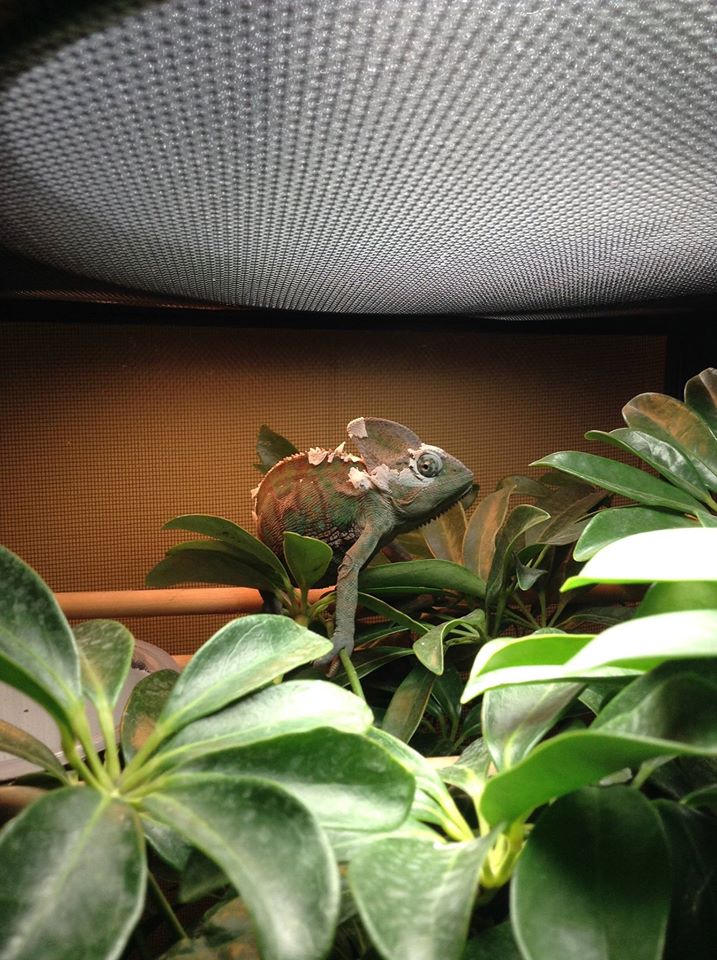BillynJennifer
New Member
- Your Chameleon - Male Veiled, around 5 months old, been with us for 2 months.
- Handling - I only handle him if I really, really have to.
- Feeding - He is eating 7-10 crickets per day. The crickets are being gut loaded by using squash, cucumbers, and whatever green, leafy veggie that is on sale that week.
- Supplements - I use Repti-Calcium without D3 every feeding. I use Repti-Calcium with D3 twice a month.
- Watering - I spray down his enclosure in the morning and again in the afternoon. I am able to see him lick water from his leaves on occasion.
- Fecal Description - His droppings are a white, mushy part with a harder black part. He's never had a parasite exam.
- History - His color was vibrant green when we first got him. There was a female that we had in his cage with him for about 3 weeks. When we moved her to her own cage, his colors have stayed dark.
Cage Info:
- Cage Type - His enclosure is a 16*16*30 screen enclosure
- Lighting - I am using a 60W regular incandescent light bulb and a 13W Reptisun 5.0 UVB. Lights are on from 9:00am-9:00pm.
- Temperature - Under the basking spot, the temp is 85 degrees. Rest of enclosure is room temperature (68-70 degrees). Measured by a digital thermometer.
- Humidity - Right after I spray, the humidity is around 80%. By the time I mist again, it's dropped to around 50%. I'm measuring the level using a digital thermometer/hygrometer from Walmart.
- Plants - I am using an umbrella plant that nearly fills up the whole canopy. I thinned out an area under the basking light.
- Placement - The enclosure is in our dining room. The area sees a bit of traffic in the afternoon/night. The enclosure is about 3ft off the floor.
- Location - I am located in Kentucky.
Current Problem - The problem that I'm having is that my male Veiled has gotten very dark and stays that way all through the day, but turning green when he goes to sleep. I had a female with him in his enclosure, and when I move her to her own enclosure, that's when his colors darkened. He also isn't eating as much as he did prior to moving the female.





